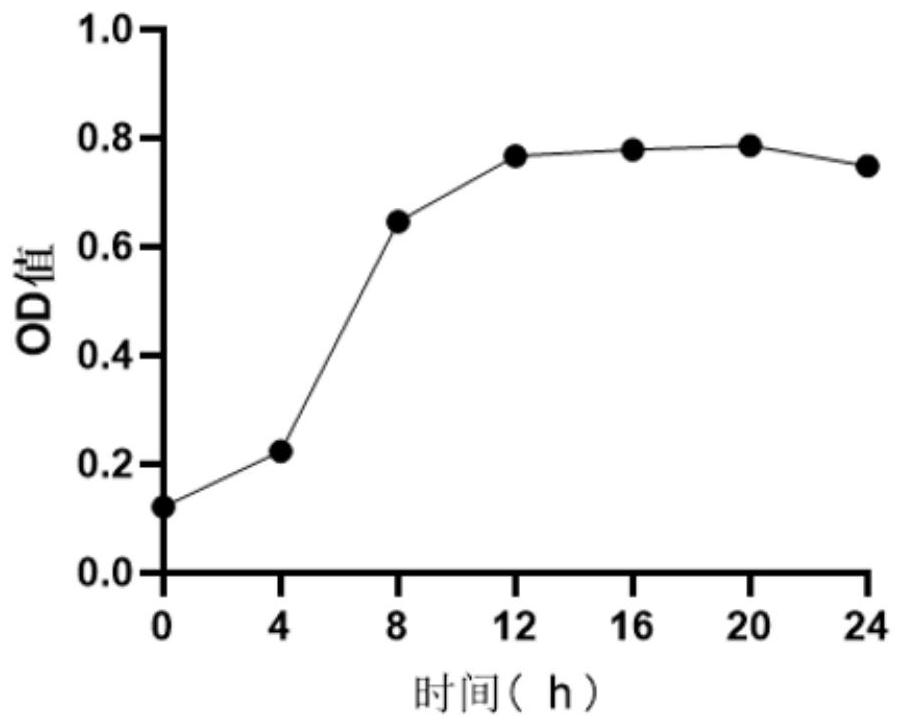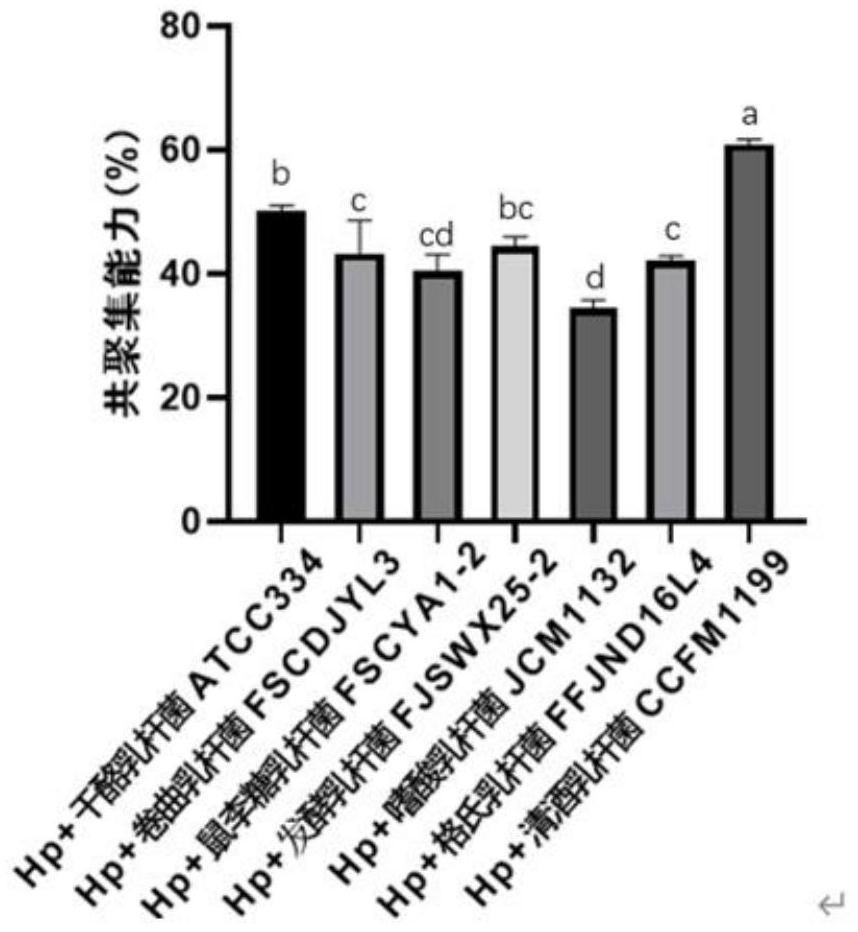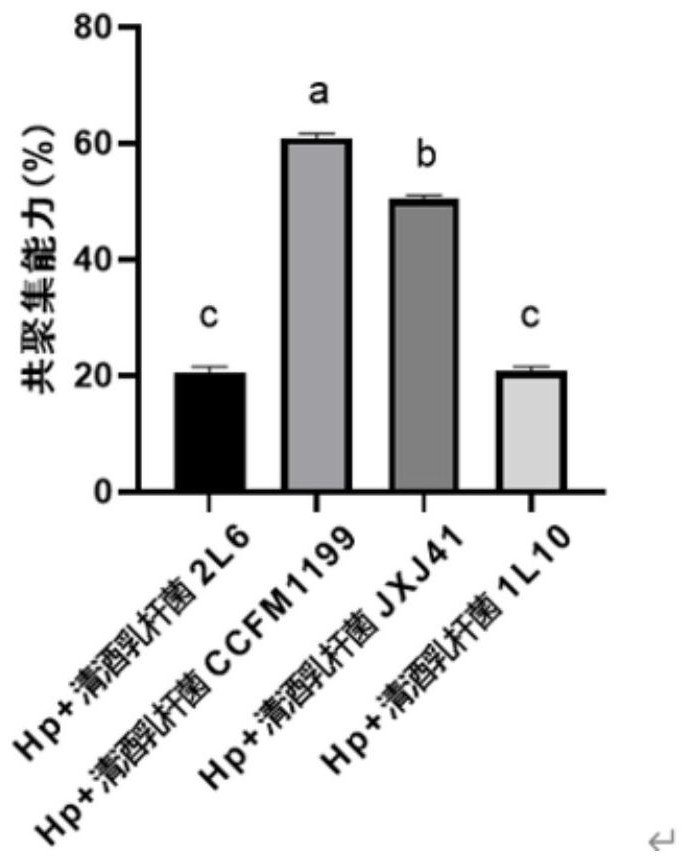Lactobacillus sake capable of being co-aggregated with helicobacter pylori and application of lactobacillus sake
A technology of Lactobacillus sake and viable count, applied in the field of microorganisms, can solve problems such as adverse reactions, patient injury, drug-resistant Helicobacter pylori strains, etc.
- Summary
- Abstract
- Description
- Claims
- Application Information
AI Technical Summary
Problems solved by technology
Method used
Image
Examples
Embodiment 1
[0087] Example 1: Screening and identification of Lactobacillus sake CCFM1199
[0088] 1. Screening
[0089] Taking distiller's grains from Maotai Town, Renhuai City, Zunyi City, Guizhou Province as samples, the samples were pretreated and stored in a -80°C refrigerator in about 30% glycerin. Enrich in 5mL LBS medium for 8 hours, dilute the enriched solution with 0.9% normal saline, select the appropriate gradient dilution solution and spread it on the LBS solid medium, culture it at 37°C for 48 hours, pick typical colonies to the MRS plate Purify by overlining, pick a single colony and transfer to liquid MRS liquid medium for enrichment, and store in 30% glycerol to obtain strain CCFM1199.
[0090] 2. Identification
[0091] The genome of the screened Lactobacillus sake was extracted, and its 16S rDNA was amplified and sequenced (completed by Shanghai Sangon Bioengineering Co., Ltd.). After sequencing analysis, the 16S rDNA sequence of the strain was shown in SEQ ID NO.1, ...
Embodiment 2
[0093] Embodiment 2: the cultivation of Lactobacillus sake CCFM1199
[0094] The Lactobacillus sake CCFM1199 prepared in Example 1 was inserted into the MRS solid medium, and after cultivating at 37° C. for 48 hours, its colony was observed, and it was found that its colony was milky white and rounded, with a smooth, moist surface and neat edges (such as Figure 10 shown).
[0095] Insert the Lactobacillus sake CCFM1199 prepared in Example 1 into the MRS liquid medium and culture it at 37°C for 24 hours. During the cultivation process, measure the OD of the culture solution with a microplate reader at intervals of 4 hours 600 , it was found that Lactobacillus sake reached a stable growth period after 16-24 hours of culture, and the results were as follows figure 1 shown.
Embodiment 3
[0096] Example 3: Co-aggregation of Lactobacillus sake to Helicobacter pylori
[0097] Specific steps are as follows:
[0098] (1) Culture of Helicobacter pylori:
[0099] After the Helicobacter pylori was streaked on the Columbia blood plate, it was cultured in a three-gas incubator (85% N) at 37°C. 2 , 10% CO 2 , 5% O 2 ) was cultivated for 3 days to obtain a single colony; pick a single colony and inoculate it in the BHI medium containing 5% (v / v) fetal bovine serum, in a three-gas incubator at 37°C (85% N 2 , 10% CO 2 , 5% O 2 ) was cultivated for 4 days to obtain the seed solution; the seed solution was inoculated in the BHI medium with an inoculum size of 2% (v / v), and was inoculated in a three-gas incubator at 37° C. (85% N 2 , 10% CO 2 , 5% O 2 ) was cultured for 4 days to obtain the activated third-generation Helicobacter pylori bacterium liquid; the Helicobacter pylori bacterium liquid was centrifuged at 8000 g for 10 min to obtain the Helicobacter pylori tha...
PUM
| Property | Measurement | Unit |
|---|---|---|
| Concentration | aaaaa | aaaaa |
Abstract
Description
Claims
Application Information
 Login to View More
Login to View More - R&D
- Intellectual Property
- Life Sciences
- Materials
- Tech Scout
- Unparalleled Data Quality
- Higher Quality Content
- 60% Fewer Hallucinations
Browse by: Latest US Patents, China's latest patents, Technical Efficacy Thesaurus, Application Domain, Technology Topic, Popular Technical Reports.
© 2025 PatSnap. All rights reserved.Legal|Privacy policy|Modern Slavery Act Transparency Statement|Sitemap|About US| Contact US: help@patsnap.com



